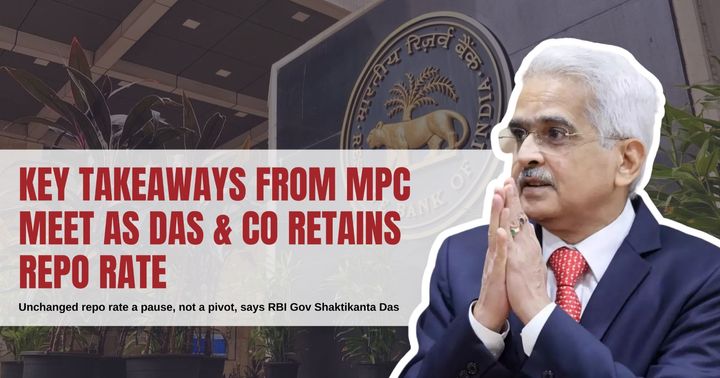You might have heard of certain ways to do things that are similar to unsaid rules. A rule of Thumb is a rough and useful principle or method, based on experience rather than precisely accurate measures, followed almost everywhere.
In terms of investing, there are certain thumb rules that help us ascertain how fast our money grows or how fast it loses its value. Then, there are rules to make our investment process easier. Thumb rules may provide great assistance but should not be the primary reason you invest or do not invest in any product and it serves as a mere investment guide.
In this blog, we will talk about the 7 most popular thumb rules in the world of investing.
📌 Rule of 72
Everyone wants to double their money and too might want to do the same. But do you know how long will it take to double your investment given the Rate of Returns?
Well, calculating the number of years in which your money doubles is very easy with the Rule of 72. According to this rule, if you divide 72 by the expected rate of return, you can get a fairly accurate estimate of the number of years your money can take to double.
For example, let’s suppose you have invested Rs 1 lakh in a product that provides you a rate of return of 12 percent. Now, if you divide the number 72 by 12, you arrive at 6. That means, your Rs 1 lakh will become Rs 2 lakh in 6 years 🥳

📌 Rule of 114
Like how the “Rule of 72” tells you the time required to double your investments, this rule tells how many years it requires to triple your investment.
According to this rule, if you divide 114 by the expected rate of return, you can get a fairly accurate estimate of the number of years your money can take to triple.
So, if you invest Rs 1 lakh in a product that gives you an interest rate of 6 percent, then as per the rule of 114, it will become Rs 3 lakh in 19 years.
📌 Minimum 10% Investment Rule
When we start earning in our mid-twenties, saving and investing is probably not the first thing on our minds. However, if you want to benefit from the power of compounding, then starting to save early is important. And starting to save from your first salary, no matter how little the amount is, you will be able to create a huge corpus for retirement.
This investment rule says that investors should start by investing at least 10% of their current salary and increase it by 10% every year.
For example, let’s assume that you are 25 years old and earn Rs 30,000 a month. You have decided to invest 10 percent of your salary, i.e. Rs 3000, every month, and increase it by another 10% every year, you would be able to create a corpus of Rs 3.4 crore at an average rate of return of 10%.
📌 100 minus age rule
When we’re young we can take risks and invest in equities because even if we face some losses we’ve time to coup up but as our age increases our risk capacity decreases.
Thus, the 100 minus age rule is a great way to determine one’s asset allocation. That is, how much you should allocate in Equities (Mod-to-High risk) and how much in Debt (Low-to-Zero Risk).
For this, subtract your age from 100, and the number that you arrive at is the percentage at which you should invest in equities. The rest should be invested in debt.
Let’s say that you are 30 years old and plan to start investing. Using the 100 minus age rule, the asset allocation of your portfolio will look like: Equity= [100 – 30] = 70% & Debt= 30%
📌 Emergency Fund Rule
Life is uncertain and we need to be prepared for hard times. One can understand this through recent global problems like inflation, wars, lay-offs, etc..
As the name suggests, the money kept aside for emergency use is called an emergency fund. It is a good practice to keep six months to one year’s expenses as an emergency fund. While calculating your expenses you should include expenses for food, utility bills, rent, EMIs, etc. The emergency fund must be kept liquid and easily accessible during such emergencies.
📌 4% Withdrawal Rule
This is more of a financial discipline rule rather than investing rule but it deserves a mention. If you want your retirement fund to outlast you, then you should follow the 4 percent withdrawal rule. As a retiree, if you follow the 4 percent withdrawal rule, it will ensure that you have a steady income stream. At the same time, you have enough bank balances on which you earn enough returns.
For example, let’s suppose, you have a Rs 1 crore retirement corpus, and you should withdraw Rs 4 lakh from it every year, ie Rs 33,000 every month.
📌 The 10,5,3 rule
When it comes to investing money, it's important to consider the rate of return that your investments can generate. The 10-5-3 rule can help you determine the average rate of return on your investment. In addition to considering the rate of return, it's also important to understand the risks associated with each type of investment.
According to the 10-5-3 rule, long-term investing in mutual funds can yield a 10% return, while bonds can yield 5% and savings accounts can average 3%. However, keep in mind that all investments carry risks, such as market volatility, potential losses, and the risk of default for bonds. Interest rates for savings accounts are also generally low. Before making any investment decisions, it's important to do your research and understand the risks involved.
Bottom Line:
Rule of thumb or popularly referred to as the thumb rule and it's an easy way to learn or apply things. These practices are based on practical experiences. So as much as you can apply these things in real life and get results from them, these rules should never be considered absolute truth. You must ensure that you research your options and talk to an investment advisor before you start investing.
These rules are more general to the investors as a whole but there are some Golden Rules which you can follow based on your personal profile in your investment journey for better success chances.





Comments ()